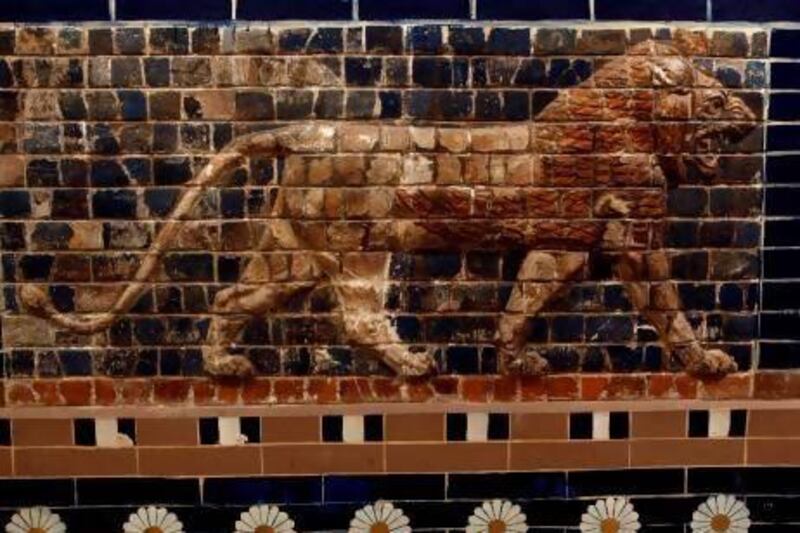BABYLON, Iraq // At ancient Babylon's Ishtar Gate, workers labour with a heavy saw, hammers, a chisel and crowbar to break up and remove a concrete slab that is hastening the structure's decay.
The concrete lies between the two long, towering walls of tan bricks decorated with processions of bulls and dragons that make up the more than 2,500-year-old gate, in Iraq's Babil province.
The slab was laid during the late dictator Saddam Hussein's rule. Removing the concrete is deemed essential to preserving the Ishtar Gate, which also served as the base for a later gate of the same name, the reassembled remains of which are now located in Germany.
In the 1980s, "there was a large intervention of modern masonry inserted behind the facades" of the Ishtar Gate, in addition to "changes in the terrain behind, and resurfacing of the base of the gate with concrete", said Jeff Allen, field manager for the Future of Babylon project which is carrying out the work.
All of those factors are accelerating the rate of damage at the site, Mr Allen said.
Removing the concrete "will allow the ground to breathe and evaporate water, because at the present time ... the water cannot escape, so it routes through the easiest direction to get to the surface", which is through the gate itself, he said.
The Future of Babylon project is a joint effort between the World Monuments Fund, which works to save key cultural heritage sites, and Iraq's State Board of Antiquities and Heritage.
The project's original aim was to complete a management plan for Babylon, but it has been expanded to include restoration and conservation work as well.
Babylon, one of the most famed cities of antiquity and now an important archaeological site, has a long history of damage and abuse.
In addition to the concrete problem, modern work atop the Ishtar Gate directs rainwater down its front, causing erosion. And parts of the gate are riddled with modern bricks that will have to be removed and replaced with others that are historically accurate.
In the past, people also removed original bricks from Babylon for use in construction elsewhere.
A shoddily-built modern brick wall meant to imitate an ancient structure runs along the remains of the Processional Way, a path walked by giants of history including Alexander the Great.
"It's terrible work, but it lies on top of original brickwork," Mr Allen said.
Other ancient structures at the site have been built upon in similar fashion.
The construction at Babylon was begun in the 1970s but accelerated under Saddam's rule, Mr Allen said.
"Saddam Hussein gave an order to make Babylon 'presentable' to the public for a festival he wanted to hold," he said.
"It's disastrous for the integrity, it's a disaster for conservation work."
Saddam also had multiple man-made hills and lakes built at Babylon.
But the abuse of the site of ancient Babylon is not limited to Saddam's rule.
The British once ran a railway line through the site, Mr Allen said, while various roads were later put in, as were three different oil pipelines.
There are also asphalt car parks within the boundaries of the site, and American and Polish forces used it for a military base after the 2003 US-led invasion that toppled Saddam, causing further damage.
"This site has been abused for decades, decades and decades - it has to stop!" Mr Allen said.





